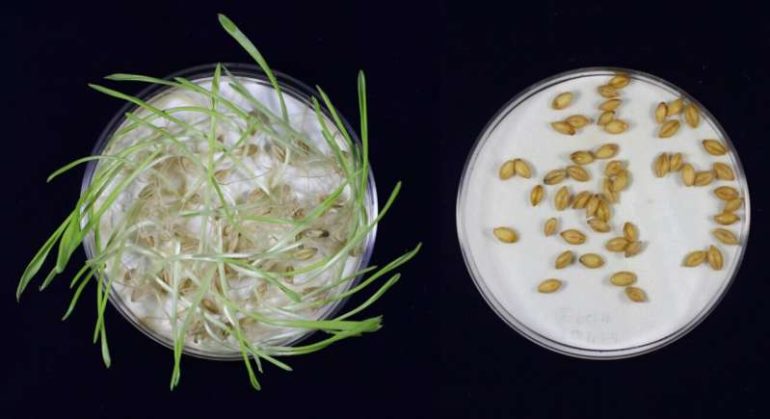After a spell of unexpected rain, before the harvest season, a farmer may be faced with the unpredictable problem of untimely sprouting of barley. Sprouted barley fetches considerably lower market prices and poses an economic burden on farmers and corporations that are at the mercy of nature. The aggravation of climate change has not made this situation any better.
The problem of pre-harvest sprouting has thus kept agricultural researchers occupied. Pre-harvest sprouting can be avoided by prolonged grain dormancy through genetic manipulation. However, dormancy can interfere with malt production, and also cause non-uniform germination upon sowing. Balancing these issues is necessary for high-quality barley production.
Now, a team of scientists, led by Associate Professor Dr. Hiroshi Hisano from Okayama University, Japan, offers a solution to this age-old problem. To achieve the perfect barley, they looked to the latest gene manipulation technology—CRISPR/Cas9-based gene editing. Dr. Hisano says, “We recognized the need to strategically manipulate crops to weather the effects of steadily exacerbating climate change. Since our collaborative research group had already developed expertise in precision genome editing of barley, we decided to go with the same initially. Also, previous studies have pinpointed specific grain and seed dormancy genes in barley, called Qsd1, and Qsd2. Hence, our modus operandi was pretty clear.” Their findings have been published as a research article in Plant Biotechnology Journal.
Using CRISPR/Cas9 targeted mutagenesis, Dr. Hisano and his team genetically manipulated samples of Golden Promise barley to be either single mutants (qsd1, or qsd2), or double mutants (qsd1 and qsd2). Then, they proceeded to perform germination assays on all mutants and non-mutated samples.
Subsequently, the results they obtained for mutants, when compared to non-mutants, were extremely interesting. All the mutants showed delayed germination, but there were mutant-specific or conditional properties. Germination of mutants was promoted by 3 percent hydrogen peroxide treatment; exposure of all mutants to cold temperatures largely promoted germination, indicating that the grains of the mutants were not dead but had been dormant longer. The qsd1 mutation in single mutants partially reduced long grain dormancy, owing to qsd2; and qsd2 mutants could germinate in the dark, but not in the light. Also, all mutants showed abscisic acid build-up, consistent with conditions observed with delayed germination. Notably, this abscisic acid build-up in itself cannot maintain long-term grain dormancy, the latter being important for high-quality barley production.
Dr. Hisano says, “We successfully produced mutant barley that was resistant to pre-harvest sprouting using the CRISPR/Cas9 technology. Also, our study has not only clarified the roles of qsd1 and qsd2 in grain germination or dormancy, but has also established that qsd2 plays a more significant role.”
Overall, this study serves as a milestone for present and future crop improvement research via efficient gene manipulation. The researchers are hopeful that they may be able to solve food and environmental problems using their enhanced biotechnology techniques.
Barley dormancy mutation suggests beer motivated early farmers
More information:
Hiroshi Hisano et al, Regulation of germination by targeted mutagenesis of grain dormancy genes in barley, Plant Biotechnology Journal (2021). DOI: 10.1111/pbi.13692
Provided by
Okayama University
Citation:
New gene-edited barley that could improve beer (2021, November 12)
retrieved 14 November 2021
from https://phys.org/news/2021-11-gene-edited-barley-beer.html
This document is subject to copyright. Apart from any fair dealing for the purpose of private study or research, no
part may be reproduced without the written permission. The content is provided for information purposes only.



